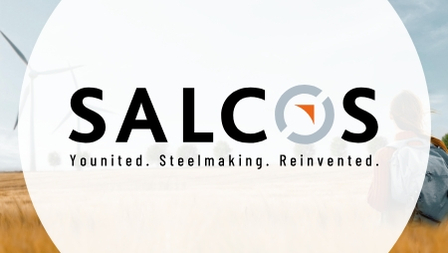Hot strip for the Mannesmann “Zeelink” large-diameter pipe project
27.02.2019 | Salzgitter Flachstahl GmbH

Salzgitter Flachstahl is recognized worldwide as a qualified supplier of hot rolled wide strip as input material for the manufacture of gas line pipes. The Mannesmann Röhrenwerke large-diameter pipe plant is Salzgitter Flachstahl’s most important customer and consumer of special steels. Thick-walled offshore gas line pipes are predominantly manufactured using heavy plate, whereas for onshore pipes, hot rolled wide strip is frequently used. Some of these pipes are spiral welded as the illustration shows.
New pipeline networks are permanently under construction worldwide and existing ones repaired and modernized. For example, the second Nordstream pipeline is currently being laid to supply Western Europe with Russian natural gas. Numerous branches will be required from the main line running through the southern Baltic to deliver the gas to the end user.
Gas pipe grades are standardized in specific norms such as ISO 3183*; API 5L** or EN10208***. A particular consideration for Salzgitter Flachstahl is that the properties of the hot strip used are not standardized. Instead, the input material must be so produced and supplied as to ensure that the final characteristics which are inevitably altered during the forming and welding process reliably comply with the pipe specifications.

Typical API grades include X70M thermo-mechanically rolled steel with a tensile strength of around 600 MPa at the pipe, or L485MB/ME as defined in the EN 10208 standard. The designation of the steel is derived from its minimum yield strength: 70,000 ksi = approx. 483 MPa.
The requirements for each project always result in individual specifications for the pipe steel. In view of the volume of rolled steel approaching 10,000 t/month, the Zeelink project also requires a specially devised rolling strategy in order to ensure the greatest possible material homogeneity over the entire delivery period. In addition to the rolling process, basic requirements also include exact compliance with the specified chemical composition of the material and consistent pipe manufacturing processes.
For the natural gas pipeline through North Rhine-Westphalia, which extends from the Belgian border to Ahaus, higher minimum strengths are called for than those contained in the standard, with sophisticated ductility. To achieve this, the impurities commonly found in steel must be reduced to a minimum. The maximum permissible limit for boron, for example, is 0.0005% - that’s just 160 g per 32 t coil. Typical hot rolled strip thicknesses are between 15 and 25 mm with widths of 1,250 – 1,650 mm.
The name Zeelink derives from the fact that the approx. € 600 million pipeline connects the Belgian gas network and with it the liquefied gas terminal in Zeebrügge to the German network. With a length of around 215 km, Zeelink is the largest individual project in the 2015 national development plan drawn up by the Bundesnetzagentur. The pipeline is scheduled to safeguard gas supplies in Western Germany from mid 2021 onwards. This will be accompanied by a gradual transition to gas with a higher calorific value.
The route of the pipeline is shown on the map.








